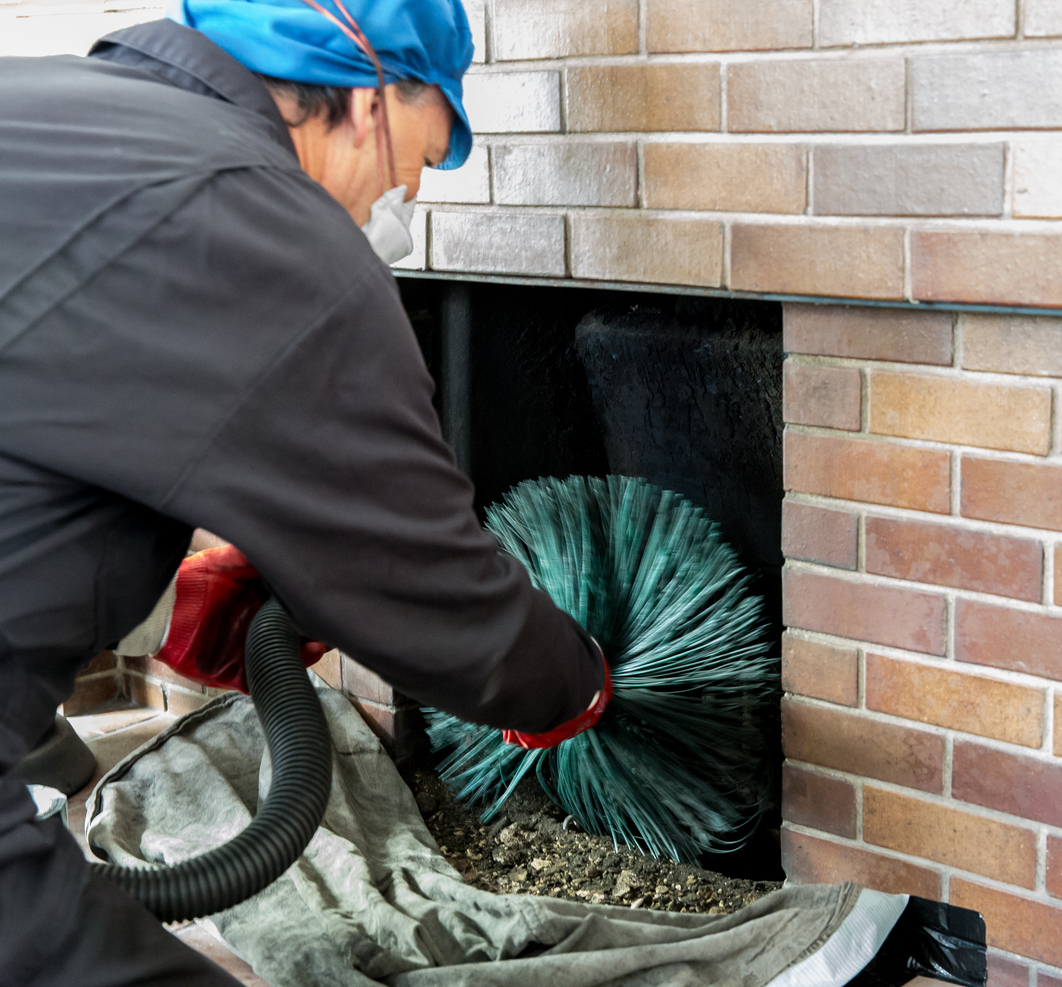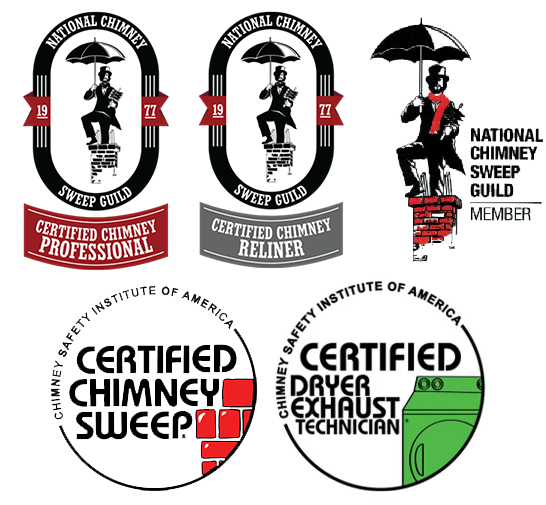
Chimney sweeping is a crucial part of chimney maintenance, ensuring that your fireplace or heating appliance operates efficiently and safely. However, many homeowners are hesitant to schedule chimney sweeps because they worry about the mess it may create. In this blog post, we will explore whether chimney sweeping is messy, what to expect during the process, and how to minimize any potential mess by hiring a certified chimney sweeper.
Understanding Chimney Sweeping
Chimney sweeping is the process of removing creosote, soot, debris, and obstructions from the chimney flue and interior walls. Exposure to harmful materials, including carbon monoxide, can occur if chimneys are not cleaned regularly, making it crucial to hire a professional for regular chimney cleaning. Creosote, in particular, is a highly flammable substance that accumulates in chimneys over time and poses a significant fire hazard. Regular chimney sweeps are essential to prevent chimney fires and maintain proper ventilation.
Now, let’s address the common concern: Is chimney sweeping messy?
The Short Answer
Yes, chimney sweeping can be messy, but it doesn’t have to create a chaotic or unmanageable situation. Using a chimney brush with a drill can help minimize mess during the cleaning process. Professional chimney sweeps are trained to minimize mess and take precautions to protect your home.
Understanding the Messiness
The mess associated with chimney sweeping primarily arises from the loosened soot and creosote being removed from the chimney’s interior. During the cleaning process, chimney sweeps use specialized brushes, rods, and vacuums to dislodge and collect these particles. It is also important to inspect the chimney exterior as part of the cleaning process to ensure there are no structural issues or blockages. Here are some aspects of chimney sweeping that may contribute to the mess:
1. Soot and Dust:
As the chimney sweep works, soot and dust particles may become airborne, potentially settling on nearby surfaces. This can include dusting, furniture, and flooring in the immediate vicinity of the fireplace.
Additionally, removing soot from chimney walls is crucial to prevent chimney fires.
2. Debris Removal:
Debris such as leaves, animal nesting materials, and creosote may be dislodged and fall into the fireplace or hearth area during the cleaning process.
Using a chimney cap can prevent debris from entering the chimney in the first place.
3. Protective Coverings:
Chimney sweeps typically use protective coverings, drop cloths, or plastic sheets to minimize mess and contain debris. However, some fine particles may escape these coverings.
4. Vacuum Usage:
Chimney sweeps use powerful vacuums to capture soot and debris as they work. While effective, there may still be minor dust emissions during vacuum operation.
Professional Chimney Sweep and Cleanliness
Professional chimney sweeps are well aware of the potential mess associated with their work, and they take several precautions to minimize it. Here’s how they ensure a cleaner chimney sweeping experience:
Hiring a professional chimney sweep is crucial for safety and efficiency, as they are trained to handle tasks such as annual cleaning, inspecting for creosote buildup, and dealing with heavy creosote buildup or structural damage.
1. Protective Measures:
Chimney sweeps will cover nearby furniture and flooring with protective materials to prevent soot and debris from settling on surfaces. They may also use plastic sheeting to create an enclosed workspace around the fireplace. Additionally, using a cleaning brush for DIY chimney cleaning is a cost-effective method that many customers find easy to use and effective, saving money over hiring professional services.
2. High-Efficiency Vacuum Systems:
Professional chimney sweeps use high-efficiency vacuum systems equipped with HEPA filters to capture and contain soot and debris. This minimizes dust emissions and keeps the work area cleaner.
3. Proper Equipment:
Chimney sweeps use specialized brushes and rods designed to dislodge creosote and soot efficiently while minimizing mess. They also employ drop cloths and tarps to catch debris as it falls.
4. Expertise and Experience: Chimney Safety Institute
Experienced chimney sweeps have honed their skills to work efficiently and cleanly. They take pride in leaving your home in a better condition than when they arrived.
Hiring a CSIA certified chimney sweep ensures that you are getting a professional with the expertise, tools, and knowledge to protect against chimney fires and carbon monoxide, making your fireplace safer and more efficient.
5. Cleaning Up:
After the chimney sweeping is complete, chimney sweeps will clean up any residual dust or debris, leaving your home in a tidy state. They may also offer additional cleaning services if needed.
Tips for Minimizing Mess During Chimney Cleaning
While professional chimney sweeps are well-equipped to minimize mess, there are steps you can take to further reduce any potential disruption:
Regular maintenance of wood burning fireplaces and stoves is crucial to prevent fire and health risks.
1. Clear the Area:
Remove any valuable or fragile items from the vicinity of the fireplace or stove before the appointment. This includes decorations, artwork, and fragile furniture.
2. Cover Furniture:
If you have furniture near the fireplace, consider covering it with sheets or drop cloths to protect it from dust and debris.
3. Close Damper or Glass Doors:
Before the chimney sweep arrives, close the damper or glass doors on your fireplace to prevent debris from falling into the living space.
4. Communicate Your Concerns:
If you have specific concerns about mess or dust allergies, communicate them with the chimney sweep when scheduling the appointment. They can take additional precautions to address your needs.
5. Be Present During the Sweep:
Being present during the chimney sweep allows you to observe the process and address any concerns immediately. You can also discuss the use of protective coverings and cleanup procedures with the sweep.
6. Plan for Cleanup:
Prepare for some light cleaning after the chimney sweep has finished. Vacuum or dust any surfaces that may have accumulated dust during the process.
While chimney sweeping may involve some mess, it’s a manageable and essential part of chimney maintenance to ensure your fireplace or heating appliance operates safely and efficiently. Professional chimney sweeps are experienced in minimizing mess through protective measures, specialized equipment, and cleanup procedures. By taking a few precautions and communicating your concerns with the chimney sweep, you can ensure a cleaner and more efficient chimney sweeping experience. Remember that the short-term mess is a small inconvenience compared to the long-term benefits of a safe and functional chimney.

